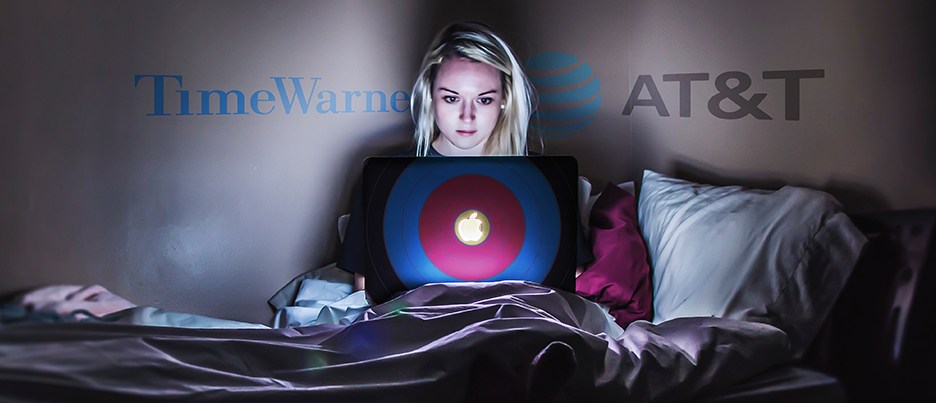AT&T, Time Warner merger intriguing for advertisers

Judge Richard Leon’s recent ruling on the pending AT&T/Time Warner merger was of great interest on many levels, from its potential impact on future anti-trust law and the tech and entertainment industries to its ramifications for the Trump Administration and the viewing public. While it’s ultimate effect is still largely TBD, there is one segment of interested bystanders who overwhelmingly cheered the ruling: marketers.
The ruling paves the way for AT&T to not only distribute more and better content to its 159 million wireless and 40 million pay-TV subscribers, but also to let advertisers target their messages in a way that only digital companies like Facebook and Google could do previously. For the last year, the telecom giant has been putting together an advertising and analytics unit with the stated intention of “creating an automated advertising platform that can do for premium video and TV advertising what search and social media companies have done for digital advertising.” According to Ad Age, these programmatic capabilities will likely be expanded beyond AT&T’s properties in the near future.
Perhaps the most immediate impact will stem from AT&T’s ability to target ads for specific consumers, much like Facebook or Google.
“Joining the robust consumer data from AT&T with the video content from Time Warner makes for a perfect marriage in the ad world,” notes B+L Media Supervisor Erica Vonderloh. “Every advertiser wants their media to be as targeted as possible, so being able to buy advertising based on data from AT&T’s 200 million subscribers is a big deal.”
To date, Google’s YouTube has been at the forefront of digital video advertising, but it’s reputation took a big hit last year after a controversy regarding offensive content surrounding ads caused a number of major companies to suspend their YouTube campaigns.
“YouTube has definitely been the leader in video advertising, but the content is often questionable and advertisers don’t always know what they are buying,” says Vonderloh. “Time Warner’s content would bring large scale premium video to the digital marketplace and instantly make the new merged AT&T/Time Warner a leader in video advertising. While a lot of unknowns remain, the possibilities for advertisers are very intriguing.”

